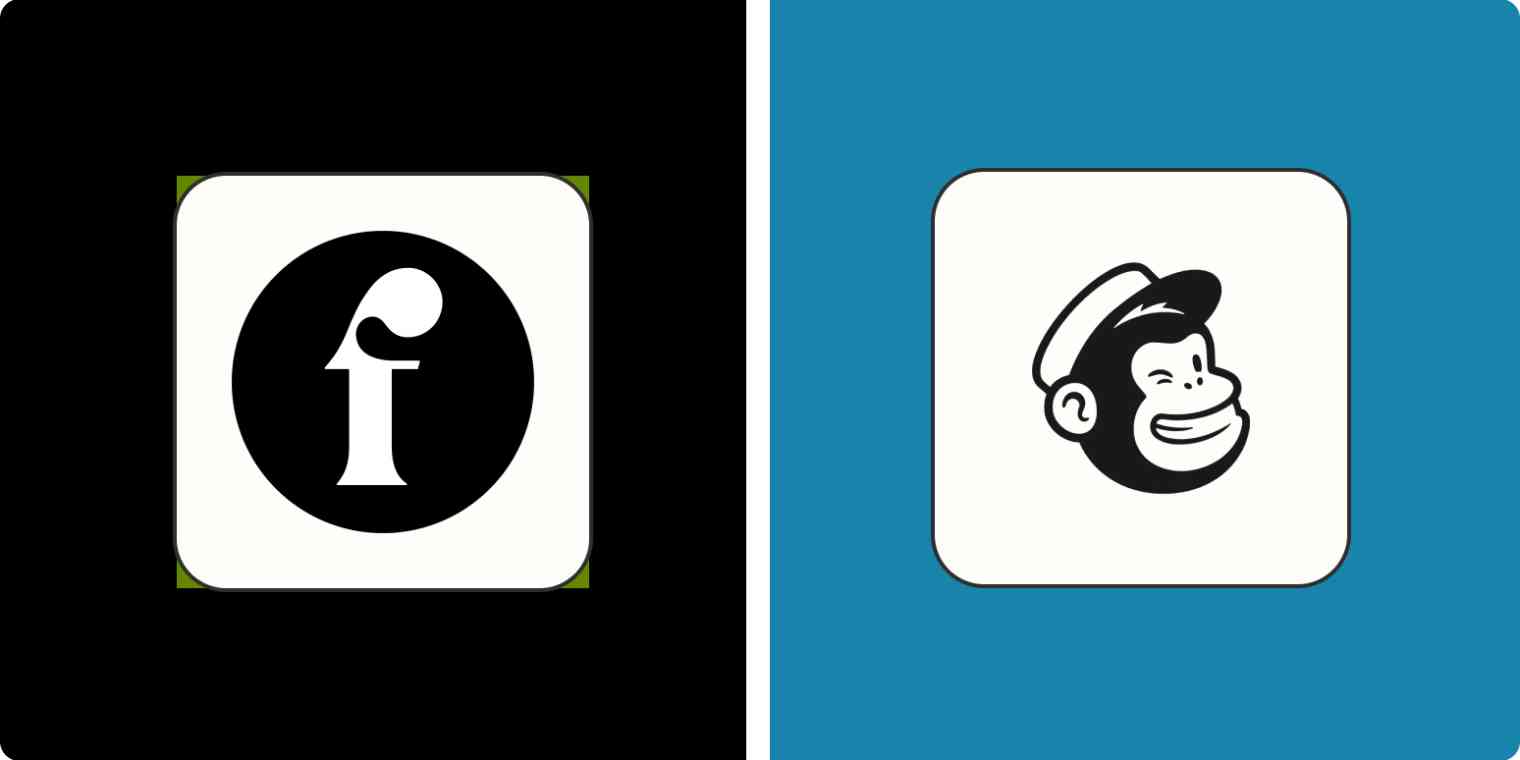Mention email marketing, and no doubt Mailchimp springs to mind. Since its debut in 2001, it's remained a household name in the email marketing arena. And over the years, it's evolved into an all-in-one marketing platform. But if you're looking for an alternative, Flodesk is a strong option. It's a relatively new email marketing service provider (launched in 2019) built for creators, by creators.
This is my second year updating this article. This year, I signed up for each one again, and did more in-depth testing. I spent time running various scenarios to see how they stacked up against each other when designing emails, creating opt-in forms, and building automated workflows. Here's my verdict.
Flodesk vs. Mailchimp at a glance
Here's a quick comparison table to get you started, but keep reading for details about the various features and my experience using each email marketing platform. Or you can scroll to the end for a quick summary of which email marketing service will be best for you.
| Flodesk | Mailchimp |
|---|---|---|
Ease of use | ⭐⭐⭐ Straightforward email platform is easier to use | ⭐⭐⭐ All-in-one platform is more challenging to navigate |
Customization | ⭐⭐⭐⭐ Large selection of fonts makes it easy to design more modern and stylish emails | ⭐⭐⭐⭐ The AI-powered Creative Assistant is a game-changer and time-saver for email design |
Forms | ⭐⭐⭐⭐ Superior range of inspiring signup forms | ⭐⭐⭐ Minimal selection of basic black-and-white layouts |
Automation | ⭐⭐⭐ 4 pre-built workflows with detailed sequences | ⭐⭐⭐⭐ 100+ pre-built customer journeys with basic sequences |
Integrations | ⭐⭐⭐⭐ One direct third-party integration; thousands more via Zapier | ⭐⭐⭐⭐⭐ 300+ native third-party integrations; thousands more via Zapier |
Extras | ⭐ Option to add on a checkout | ⭐⭐⭐⭐ Lots of extra functionality, including AI |
Pricing and support | ⭐⭐⭐⭐ No free plan, but one fixed price for unlimited everything | ⭐⭐⭐⭐ Free version available, but other plans get pricey with more contacts |
Flodesk is slightly easier to use than Mailchimp
Although it was more of a hassle to create my Flodesk account initially, the intuitive email builder makes it easy to send marketing emails to your list. Simply follow the four-step process:
Choose a template
Design your email
Choose your audience
Send the email
Mailchimp, on the other hand, suggests following these recommended steps (based on your profile):
Create your first email
Set up automation
Grow your audience
Connect your apps
Straight away, you can see it's an extended, more holistic marketing approach than just sending emails. Having said that, Mailchimp does offer a free guided tour with an onboarding specialist to help you get started.

But overall, because there are fewer options and settings, Flodesk is slightly easier to use than Mailchimp.
Both platforms provide plenty of customization options
Flodesk lets you start from scratch or use one of its many email marketing templates. You can select your email goal to narrow the selection process: #UpMyEmailGame, Share news, Welcome, Make money, Say thanks, Inspire, or Plain text.
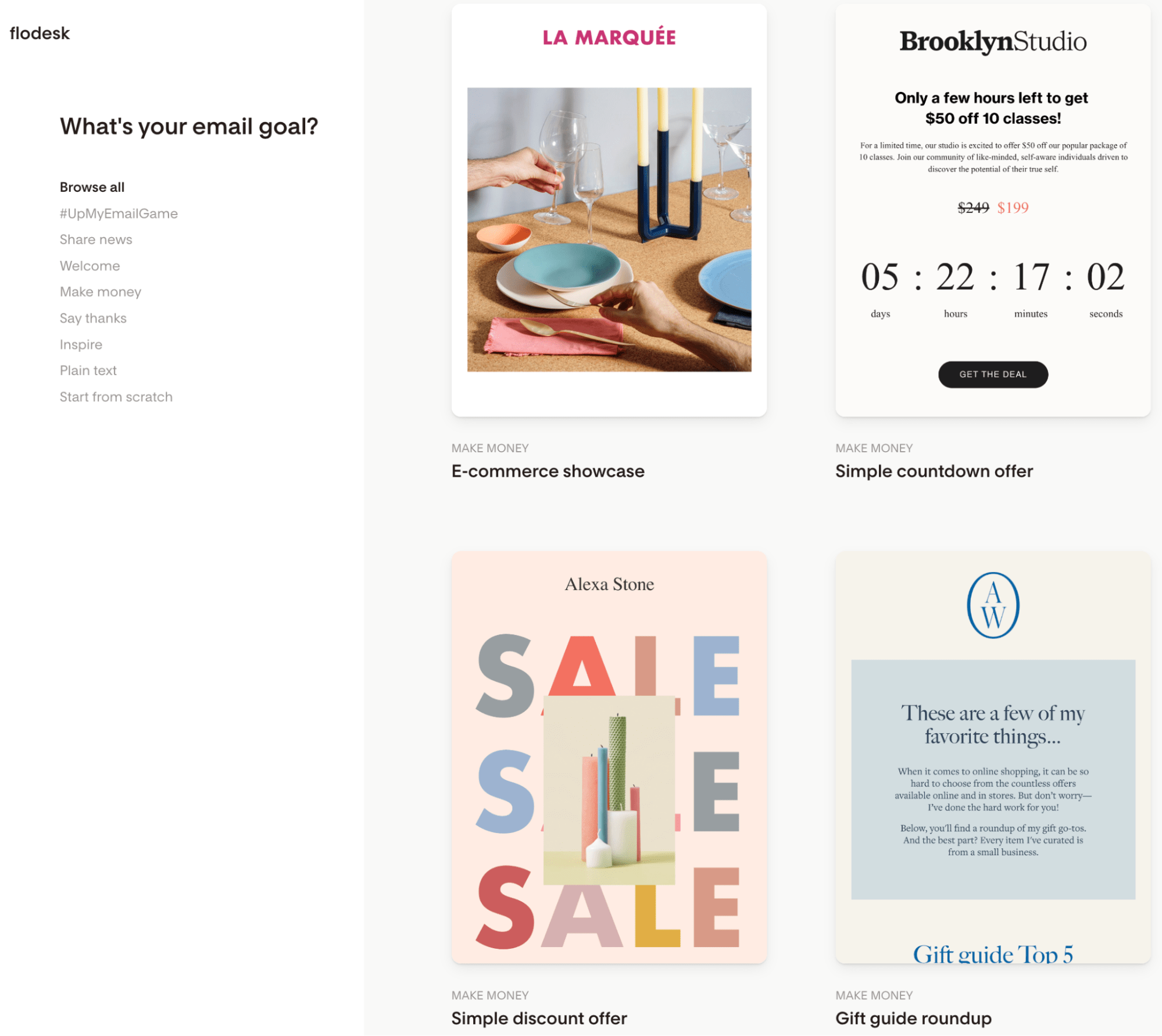
After choosing a template, you can use the drag-and-drop editor to customize the layout and content.

Flodesk's templates are more modern and stylish than Mailchimp's. Plus, they have a more extensive selection of fonts, making it easier for you to design more unique emails. Because of this, I'd say Flodesk is better suited to designers than marketers initially. But once you're up to speed with the design interface and editor, you'll be fine.
One minor irritation was that Flodesk asks for info like your business address and website URL as you create your first email, which can interrupt your design flow. In contrast, Mailchimp collects all that info when you create your account.
Moving across to Mailchimp, you get a choice of email builders:
New—use AI-assisted tools to optimize content and help boost engagement.
Classic—create a design using the classic interface, templates, and styles.
I tested both.
With the new email builder, you can start with a previously built email or a template or create a custom design with the AI-powered Creative Assistant. The latter sucks in branding from your existing website and creates a host of custom email designs.

I was impressed! Your brand color palette, fonts, and images are ready to go. Plus, you can customize anything: simply drag blocks, such as a header, divider, or survey, to add content to your email. (You can even add custom HTML if you know how.)
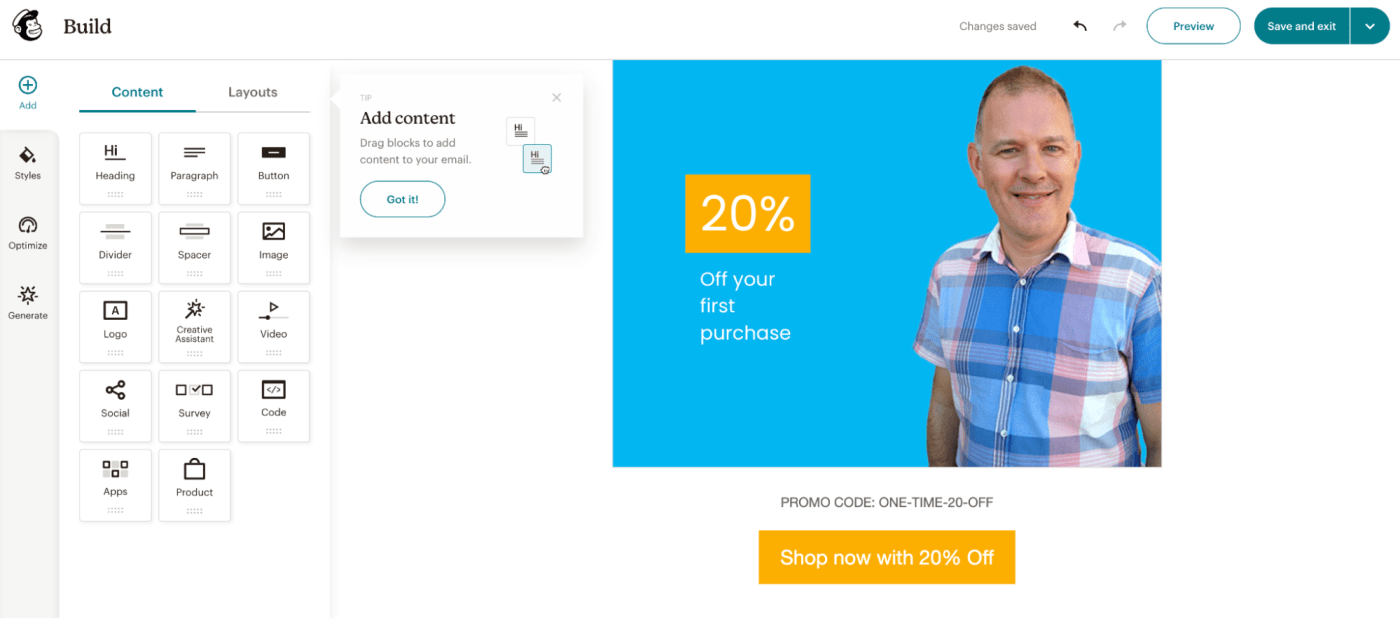
With the classic email builder, you can start with a basic layout, theme, saved template, previous campaign, or code your own. There are loads of templates to choose from, depending on how much input you want.
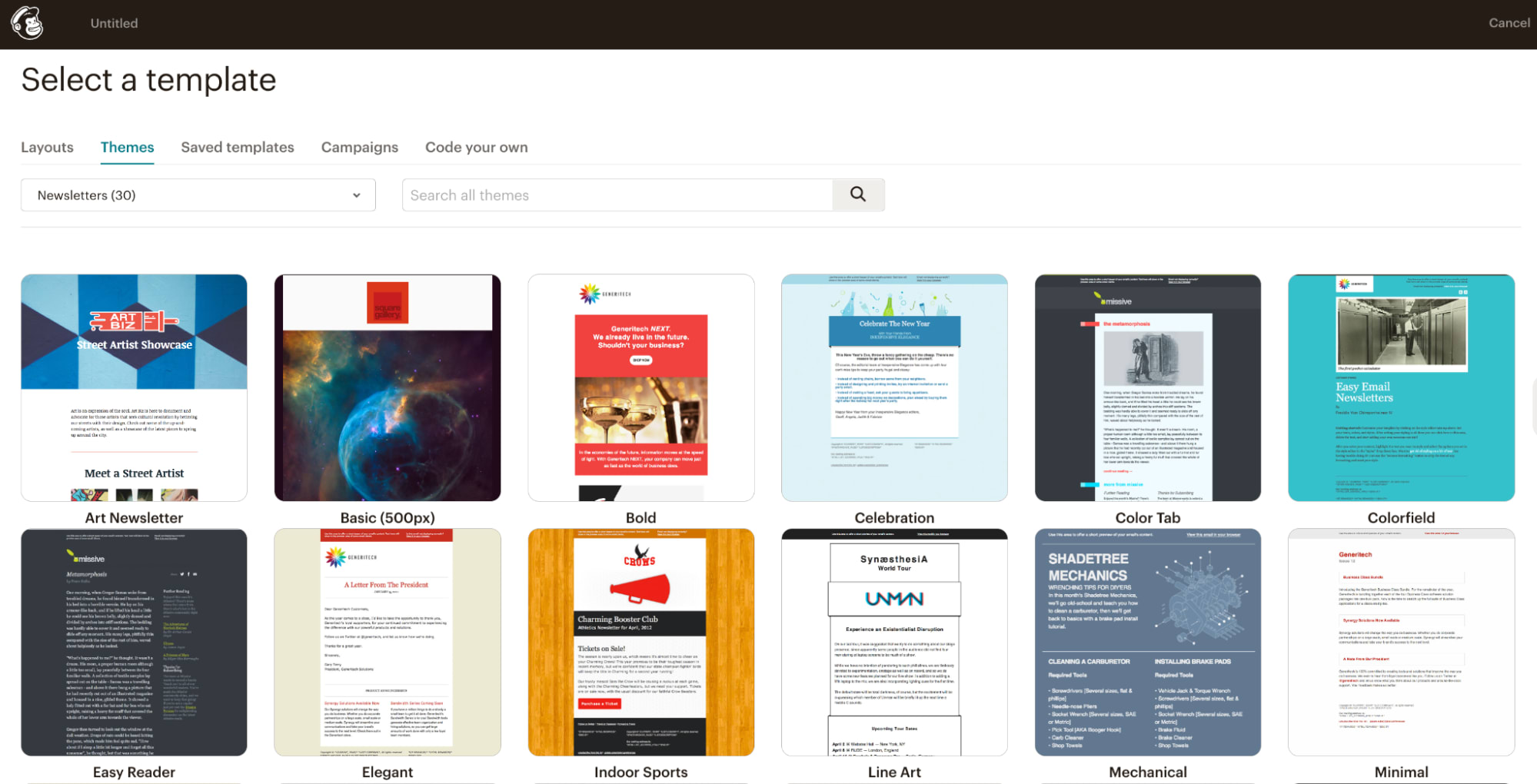
You can customize your chosen template with the drag-and-drop editor, but it's not as sleek as the new builder.

Both platforms provide plenty of customization options when designing your emails, plus the chance to preview them on desktop and mobile before you click send. I felt more comfortable using Mailchimp, but I can see that Flodesk would suit others more.
Flodesk has a more inspiring range of signup forms
Both email marketing platforms help you build your audience through signup forms.
Flodesk has a range of pop-up, inline, link in bio, and full landing page form types.
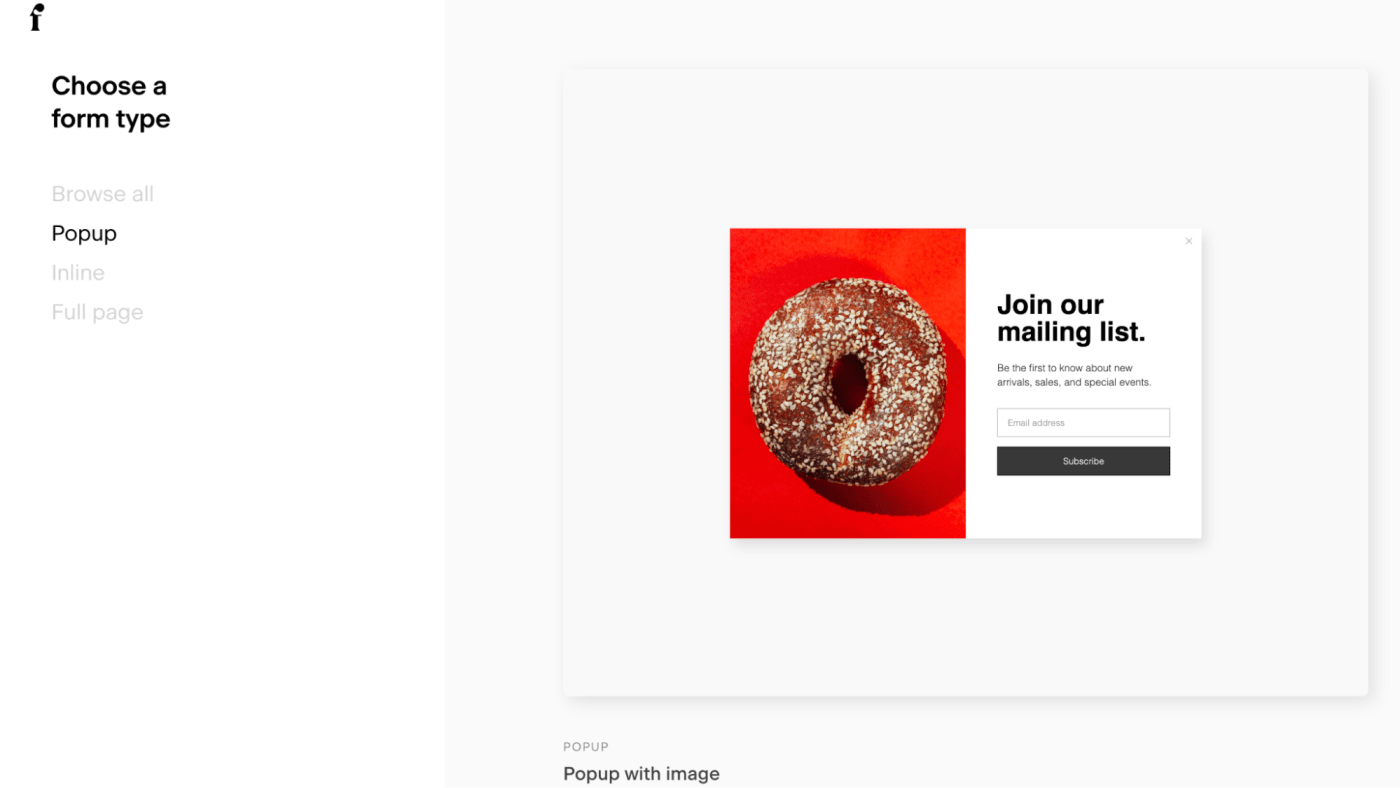
As you customize the form, you can switch on subscriber preferences, so they can select which emails they receive—for example, news and updates, discounts and sales, or in-person events.
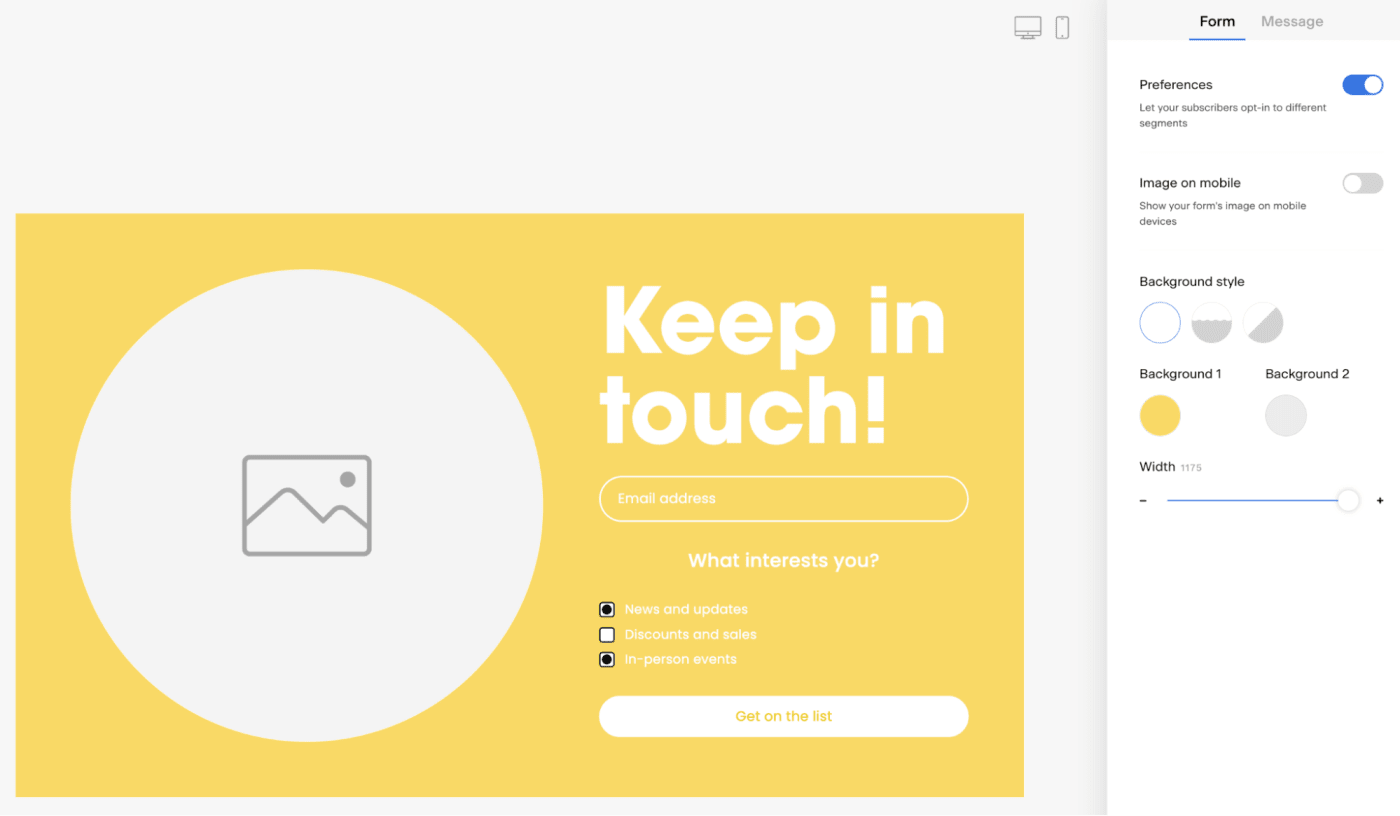
You can also specify single or double opt-in, select which segment subscribers get added to, set up the on-screen confirmation message that subscribers see after submitting their details, or choose to display a success message or redirect subscribers to a URL after the form submission.
When you're ready to embed the form, you'll need to copy the code to your website, which some people may find challenging.
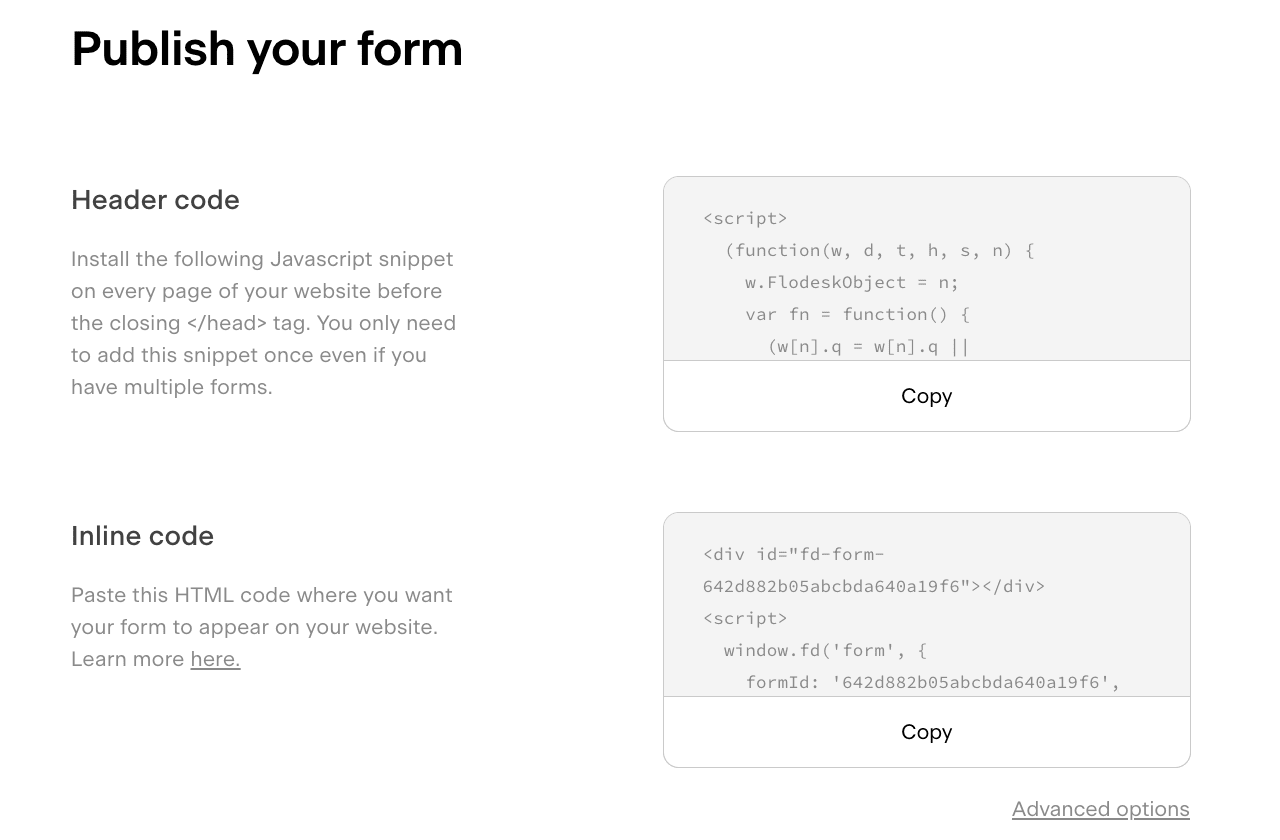
With Mailchimp, you can create a signup form, landing page, social post, or social ad to build your audience. But when it comes to signup forms, you can only choose from nine landing page templates or five basic black-and-white pop-up form layouts.

Of course, you can customize the layouts, but they're certainly not as inspiring or adaptable as Flodesk's.
Mailchimp has more automations
Mailchimp has over 100 pre-built automations—called "journeys." You can also use the Customer Journey Builder to create automated customer journeys (Standard and Premium plans only).
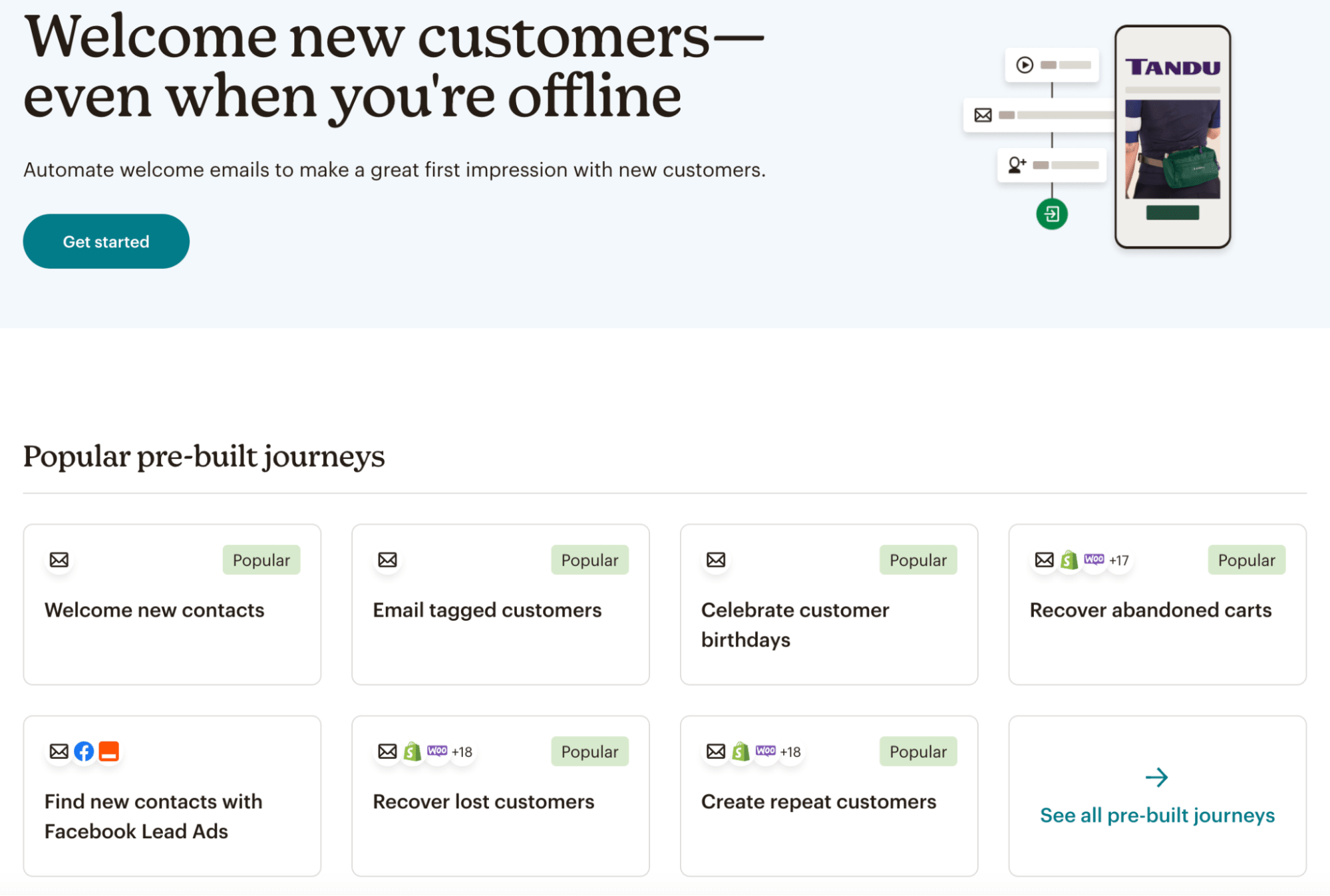
In comparison, Flodesk offers four pre-built automations—called "workflows"—plus the option to start from scratch.

When you select a template, you can use the editor to customize the design and add extra steps to the sequence.
If we take the "Welcome Sequence" as an example, Mailchimp provides a basic sequence with only one email sent after a subscriber signs up. (Hardly a sequence, really.)

In contrast, the Flodesk template contains four emails, where you define the trigger.

In both cases, you can adjust the number of emails in the sequence and the trigger, timing, or delay between emails. So the main difference here is that Flodesk offers fewer workflow templates with more steps, whereas Mailchimp provides more automations with fewer steps.
Both platforms integrate with third-party apps
Mailchimp has more than 300 native integrations, including Canva, WooCommerce, Instagram, and Shopify.

Currently, Flodesk only allows you to integrate directly with Instagram.
But both Mailchimp and Flodesk integrate with Zapier, so you can connect to thousands more apps to keep your critical workflows running. Here are some examples to get you started. Plus, discover more ways to automate Mailchimp and automate Flodesk with Zapier.
Subscribe new Facebook Lead Ad leads to a Mailchimp list
Create Mailchimp subscribers from new Typeform responses
Update contacts in Flodesk from new WooCommerce orders
Add new Facebook Lead Ad leads as Flodesk subscribers
Zapier is a no-code automation tool that lets you connect your apps into automated workflows, so that every person and every business can move forward at growth speed. Learn more about how it works.
Mailchimp offers more extras than Flodesk, including useful AI
Mailchimp has evolved into an all-in-one marketing platform that offers much more than just email marketing. For example, Mailchimp marketing plans include free website and landing page tools to build your online presence. You could offer services people book directly from your website via a scheduling tool, or start selling products by integrating email seamlessly with a commerce partner like Shopify to create AI-powered customer segments based on their lifetime value and likelihood to purchase.
On a similar note, it's worth highlighting that Mailchimp uses AI extensively to create better content and improve campaign performance:
Email Content Generator uses GPT AI technology to create email campaigns based on industry, marketing intent, and brand voice.
Content Optimizer analyzes your campaigns and provides personalized suggestions on what to improve.
Dynamic Content lets you write one email that's dynamically customized for all audience contacts.
Send Day and Time Optimization finds the best sending day and time to engage with your subscribers.
Mailchimp marketing plans also include:
A/B testing so you can experiment with different subject lines, design, content, and send-times to learn what works best for your audience.
Social media tools that allow you to connect your Facebook, Instagram, and Twitter accounts and design Facebook and Instagram ads.
Customer surveys that you can embed in emails.
A unified inbox to quickly reply to email conversations with your contacts or respond to survey feedback.
A campaign manager where you can plan, visualize, and execute multichannel campaigns.
Flodesk also has an eCommerce add-on—Checkout—for $26/month (or $288/year) with unlimited sales pages, checkout pages, upsells, payments, transactions, and instant deliveries. (No platform fees, just Stripe processing fees.) But overall, Mailchimp's offerings beyond email marketing are much more extensive.
Pricing is hard to compare—it comes down to contacts and features
Flodesk has a straightforward pricing plan: $38/month (or $420/year) for unlimited emails, subscribers, and access to all features. There's no free plan, but the 30-day free trial lets you check everything Flodesk offers—no credit card required.
Mailchimp is much more complicated. It has several tiered pricing plans based on the number of contacts and range of features.
The Free plan has limited functionality with 1,000 email sends per month.
The Essentials plan includes testing and scheduling functionality with 5,000 monthly email sends for $13/month.
The Standard plan adds optimization tools and enhanced automations with 6,000 monthly email sends for $20/month.
But those prices quickly shoot up as you add more subscribers. For example, the Standard plan jumps to $60/month for 2,500 contacts. If you want unlimited features and contacts—like Flodesk—the Premium plan starts at $350/month. So, what features you're looking for and how many contacts you have will determine which platform and pricing plan you choose.
On the support side, Mailchimp offers 24/7 email and chat support, plus phone support for the premium account. There are also online guides and tutorials to dip into. In contrast, Flodesk offers email support only and an online help center with how-to videos, email marketing best practices, and platform guides. Flodesk University is also open for anyone—no signup or registration needed—and includes free video courses from instructors and experts covering email marketing strategy and Flodesk tutorials.
Flodesk vs. Mailchimp: Which should you use?
After spending significant time testing each of them, I can confidently say that both of these email marketing platforms are excellent—it's just a case of deciding which one meets your requirements.
Choose Flodesk if you want to:
Design beautiful emails with minimalist aesthetics
Focus on email, forms, and automations
Stick with a straightforward pricing plan
Choose Mailchimp if you want to:
Start for free and scale as your business grows
Use more generic templates with less style
Encompass other marketing functionality
I can see the appeal of both platforms. If I were running a creative-based business and wanted to begin email marketing, I'd opt for Flodesk. On the other hand, if I wanted more advanced marketing features, like A/B testing, then I'd choose Mailchimp.
Related reading:
